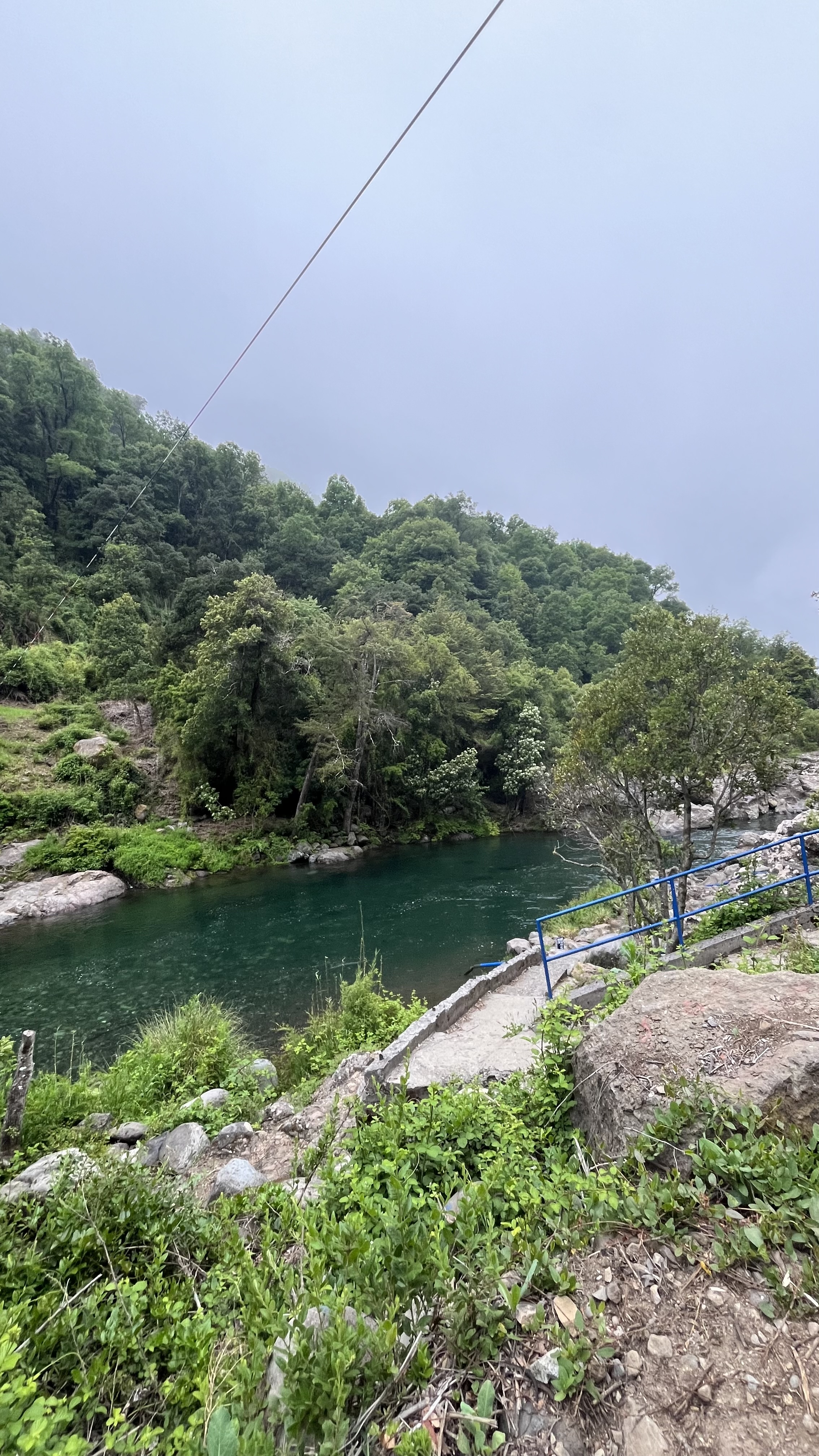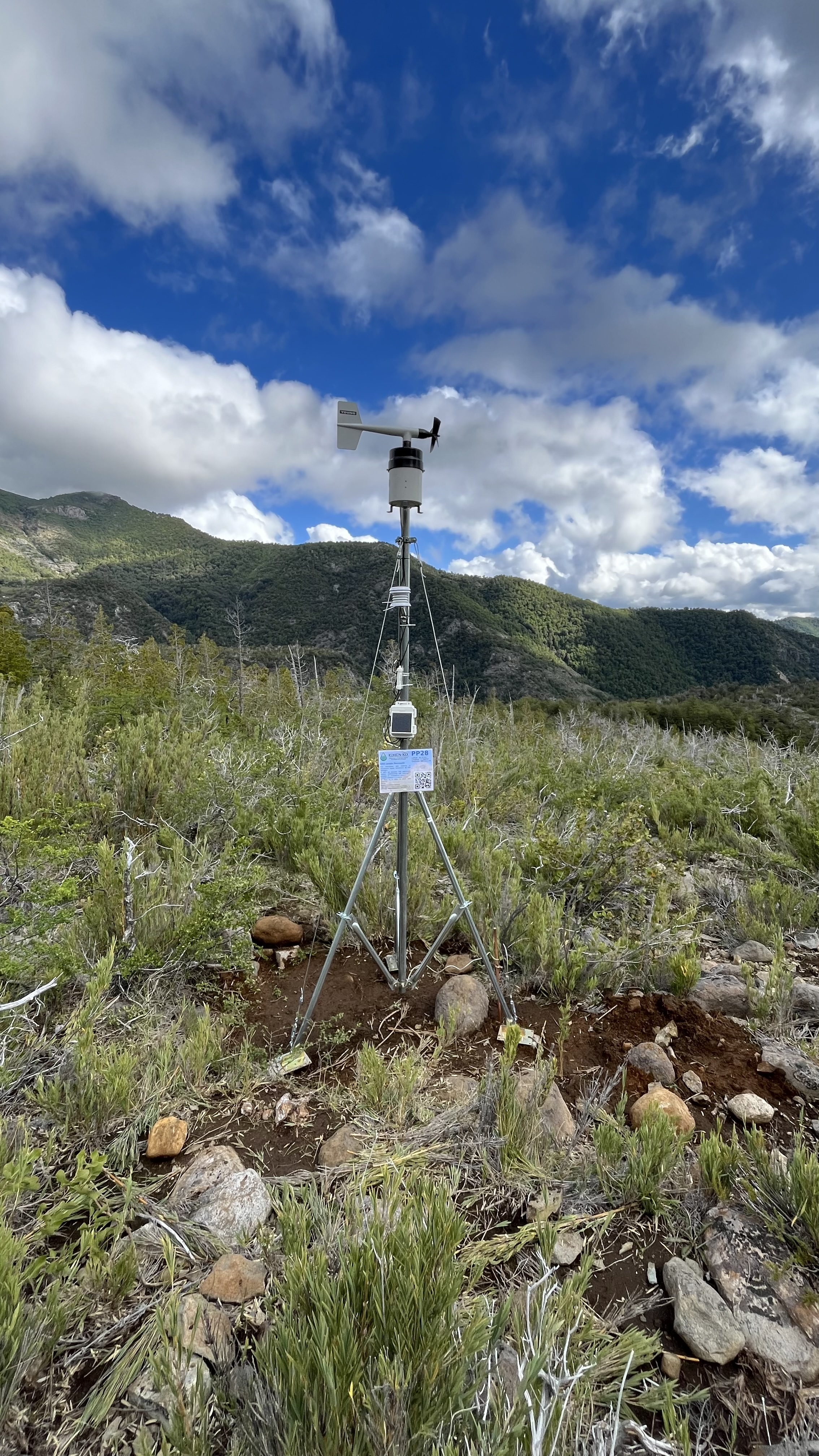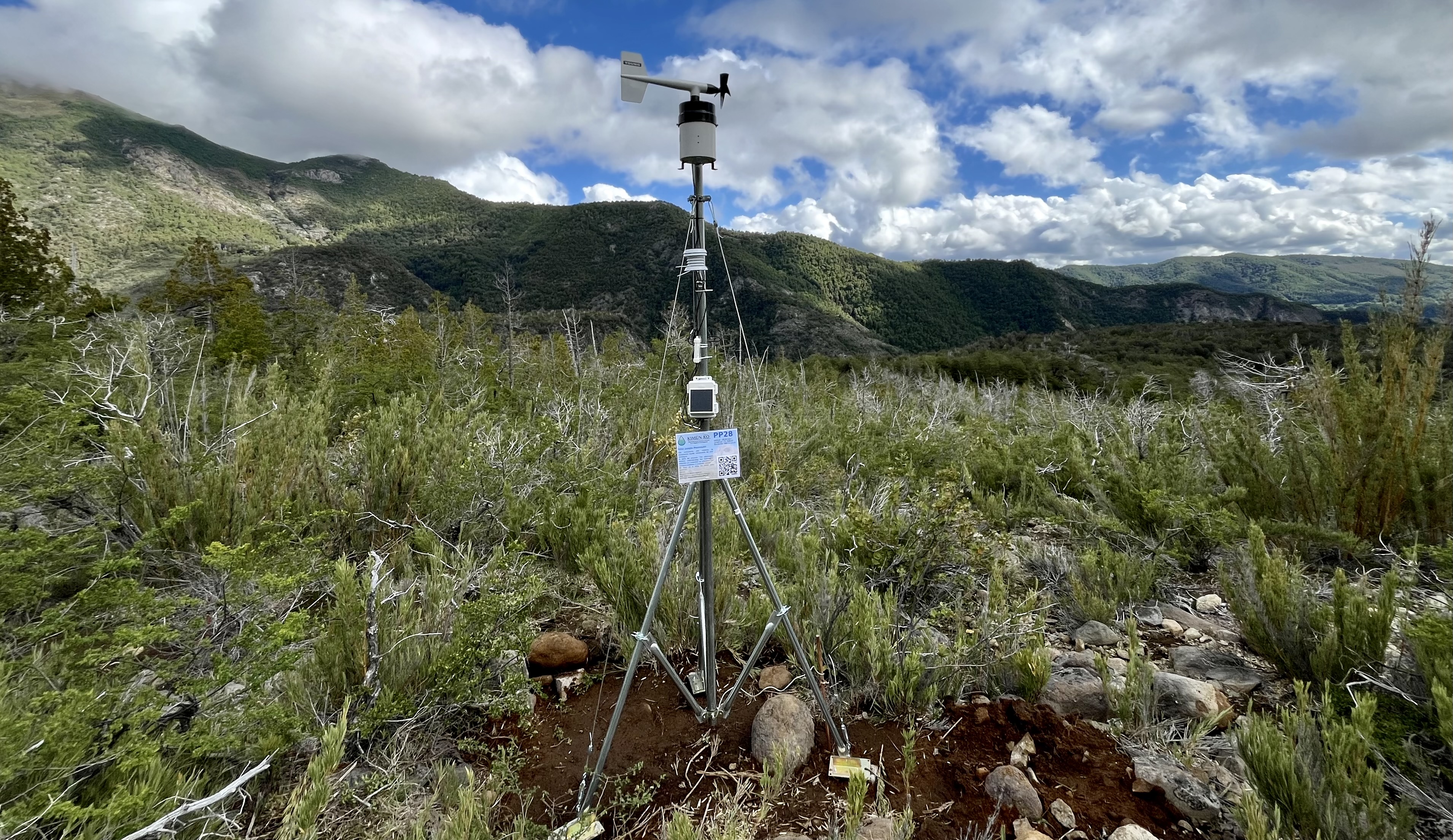New Weather Station at Jungla Peumayén Boosts Environmental Monitoring in the Chillán River Basin
On Friday, November 15, a new weather station was installed at the ecological park Jungla Peumayén, located approximately 1,100 meters above sea level. This park, spanning 3,300 hectares of native forest, volcanic and glacial-origin valleys, and waterfalls, has become a key site for environmental conservation and research in the region. The station is situated in the Chillán River Basin, specifically linked to the Río Chillán en Esperanza hydrometric station (code 8117006) of the General Directorate of Water, enabling more detailed monitoring of hydrological conditions in the area.
The new weather station is part of a network of 28 stations installed by the Kimün-Ko Water Resources Observatory in key areas across Chile. This network aims to enhance the understanding of hydrometeorological phenomena and their impact on water resources. The newly installed station will measure essential variables such as precipitation, relative humidity, atmospheric pressure, mean wind speed, wind gusts, and dew point. The data collected will be publicly available, facilitating its use by researchers, authorities, and the general community.
The installation team included Rodrigo Marinao (Master in Sciences) and Héctor Garcés-Figueroa (Civil Engineering student), both participants in the Fondecyt Regular 1212071 project, titled “The catchment’s memory: understanding how hydrological extremes are modulated by antecedent soil moisture conditions in a warmer climate.”
This installation not only fulfills scientific objectives but also aligns with Jungla Peumayén’s commitment to fostering a harmonious and sustainable connection with nature. This park, once home to Pehuenche and Chiquillán communities, seeks to create experiences that raise awareness about conservation and environmental care. In this context, the new weather station contributes to efforts to preserve local ecosystems, strengthen environmental education, and promote responsible tourism.



Figure 1. Monitoring Stations.